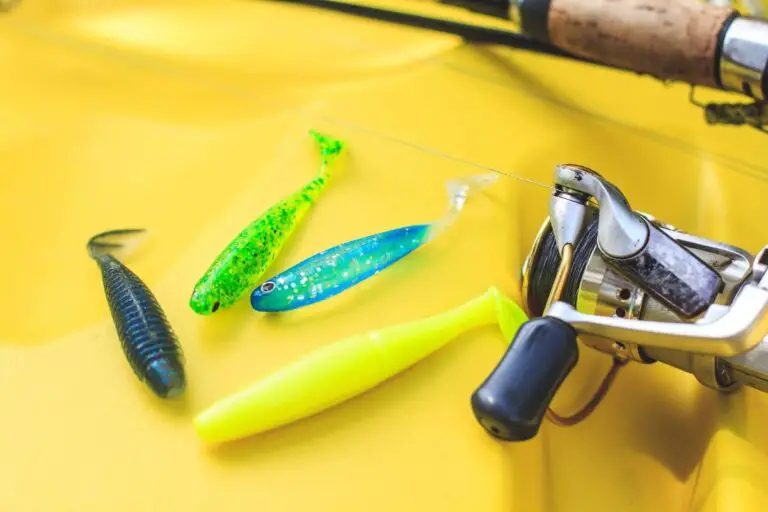How Rare Is A Tiger Trout? Can You Catch One?
There’s this unexplained thrill that comes with chasing down a rare fish in the wild. You try different things and spend hours waiting for this rare occurrence to pick you as the lucky angler. Tiger trout are one of nature’s rarest species, which is why anglers would go to any extent to catch one.
How rare is a tiger trout? Tiger trout is relatively rare. They occur from a female brown trout spawning with a male brook trout. They rarely survive growing up in the wild so they’re bred in fish farms then stocked in lakes and reservoirs when they’re old enough to survive predators.
Keep reading to know more about this fierce rare creature known as tiger trout!
Table of Contents
What is Tiger Trout?

So, what is a tiger trout? Tiger Trout is a genetic cross between a female brown trout scientifically known as Salmo trutta and a male brook trout scientifically known as Salvelinus fontinalis. It’s considered a wild rarity since it is a hybrid between two different species of trout.
They are identified by their grayish-brown color and a labyrinth-like pattern on their bodies. They have a bright-colored yellow and orange belly. Their tail fin is circular, and their pectoral and pelvic fins are usually the same color as their belly.
They are bred and raised on fish farms then some states stock them in lakes to control invasive fish species. Since their primary diet is other fish, tiger trout works extremely well in management purposes without harming the native fish populations.
If you are planning on targeting tiger trout in your next fishing trip, check out my guide on how to catch a tiger trout from shore here for effective strategies, tactics, and pro tips that will prove very helpful.
Tiger Trout’s Average Size
So, what is tiger trout’s average size? Tiger trout’s average size can reach 18-20 inches (about 30-46 cm) in just a few years. Their average weight is 2-to-5 pounds (0.9-to-2.2 kg) and they can reach up to 20 pounds (9 kg). They tend to grow faster than native fish.
The reason why tiger trout tend to grow large is due to their heavy feeding habits. Most switch to a diet of baitfish once they grow older. Also, Tiger trout are entirely sterile, therefore dedicate all their energy to feeding resulting in rapid growth.
Tiger Trout Lifespan
The tiger trout lifespan is 8 years which can vary depending on the size and condition of their habitat. Generally, Tiger trout have greater longevity than their parents; brook trout and brown trout, averaging about five years.
The rare occurrence of tiger trout is one of the reasons why their life span is extended. It happens in fish farms where they can safely grow older before they’re stocked in another waterbody with competition and predators.
Another reason why they can grow older is attributed to the spawning process itself, which occurs by the fertilization of brown trout eggs and brook trout milt. As a result, the Tiger trout has an excess of chromosomes and a survival rate of around 85 percent.
World Record Tiger Trout
What is the world record tiger trout? The all-tackle world record tiger trout stands at 20 pounds, 13 ounces (9.44 kilograms). That tiger trout was caught in Wisconsin at Lake Michigan by Pete Friedland in 1978. According to the International Game Fish Association.
The second-largest tiger trout was caught in 2015 by 53-year-old Kelly Flaherty using a worm and egg. He caught an 18.49 pound (8.3 kilograms) fish on Bonaparte Lake near Tonasket in Okanogan County.
How Rare Is A Tiger Trout?
Tiger trout is relatively rare in nature. They occur from a female brown trout spawning with a male brook trout. They cannot be crossed the other way, female brook trout by male brown trout, because the brookie’s egg is too small to be fertilized by brown trout sperm.
The rarity of occurrence can be attributed to the difference in spawning time of brook and brown trout, with brookies typically spawning later than brown trout. If eggs and fry are not raised in fish farms, their survival rate is just around 5%. This is due to the parents being unrelated, since brown trout are transplants from Europe, while brook trout are native to the Upper Peninsula.
Where To Find Tiger Trout?
Coldwater conditions are ideal for tiger trout. Tiger trout can also be found in moving water. They can swim really quickly which enables them to swim against the current while remaining in oxygen-rich water. Another prime location for tiger trout is small fish concentrations, if you’re able to locate them you’re half done.
Some places with known populations of tiger trout include:
- Utah
- Indiana
- Wyoming
- West Virginia
- Michigan
- Colorado
- Minnesota
- Pennsylvania
- Washington state
- Ohio
- New Jersey
- South Dakota
- Nevada
- Montana
- Illinois
- Connecticut
- Saskatchewan, Canada
I have made a separate guide on how to catch tiger trout in Colorado here with the best 11 spots to target, so make sure to check this out as well.
How Can You Catch Tiger Trout?
You can catch tiger trout with either bait fishing or fly fishing. Even though catching trout is limited to specific lakes and rivers which can make it relatively hard, the tiger trout nature of heavy feeding makes it easier.
It’s safe to go with a 6-pound monofilament or fluorocarbon. You can also use something like a 10-pound braid with a 4-to-6 foot (12-to-1.8 meter) fluorocarbon leader. Add a 6 or 8 bait hook and one or two split shots and fasten it 10-to-12 inches (about 25-to-30 cm) above the hook. Adjust the weight by adding or subtracting split shots if required to keep the bait going in the current.
Early morning and late evening are your best options, any other time will probably be too hot for them not to hide deeper in the water where you can’t catch them.
Concentrate on near drop-offs adjacent to tiger trout hunting grounds in 15 to 20 feet (4.5-to-6 meters) of water. If you’re fishing in a stream, you can find them seeking shelter in deep pools and water pockets near under-cut banks or under overhanging trees. You can use small lures into deep water like spinners, jigs, and crankbaits to imitate small fish that trout go after.
If you’re going for fly fishing, make sure to match the hatch of the water body you’re fishing in. using Zonker Minnow, Sparkle Dun, or Midge Patterns can pay off in most tiger trout habitats.
Related Questions
Are Tiger Trout Good To Eat?
Yes, tiger trout is good to eat in terms of safety. However, some anglers don’t recommend it as a delicious fish. Tiger trout meat is firm and flaky, close in flavor to brown and brook trout. Tiger trout are best served pan-fried in oil with a layer of seasoned flour.
Can You Use Live Bait For Tiger Trout?
Yes, you can use live bait for tiger trout such as worms, eggs, and live or dead minnows depending on local regulations. Though powerbait is not commonly considered premium tiger trout food, it works better for stocked rainbow trout.




![What Does Rainbow Trout Taste Like? [Tips From A Pro Chef]](https://outdoorskilled.com/wp-content/uploads/2021/11/oven-baked-rainbow-trout-768x512.jpeg)



